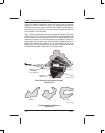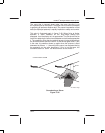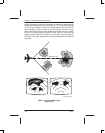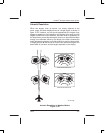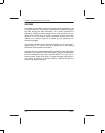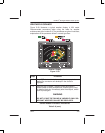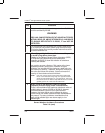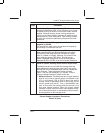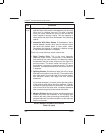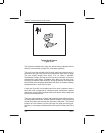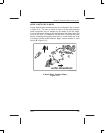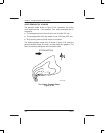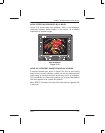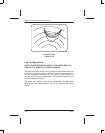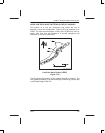
PRIMUS
R
660 Digital Weather Radar System
A28–1146–111
REV 2
Radar Facts
5-46
Step Procedure
10
(cont)
2. Disturbed Wind Flow. Sometimes thunderstorm
updrafts block winds near the thunderstorm and act much
like a rock in a shallow river bed. This pillar of updraft
forces the winds outside the storm to flow around the
storm instead of carrying it along. This also happens in
wake eddies that often form downstream of the blocking
updraft
3. Interaction With Other Storms. A thunderstorm that is
located between another storm and its moisture source
can cause the blocked storm to have erratic motion.
Sometimes the blocking of moisture is effective enough
to cause the thunderstorm to dissipate.
Three of the most common erratic motions are:
1. Right Turning Echo. This is the most frequently
observed erratic motion. Sometimes a thunderstorm
echo traveling the same direction and speed as nearby
thunderstorm echoes, slows, and turns to the right of its
previous motion. The erratic motion can last an hour or
more before it resumes its previous motion. The storm
should be considered severe while this erratic motion is
in progress.
2. Splitting Echoes. Sometimes a large (20–mile or larger
diameter) echo splits into two echoes. The southernmost
echo often slows, turns to the right of its previous motion,
and becomes severe with large hail and extreme
turbulence.
If a tornado develops, it is usually at the right rear portion
of the southern echo. When the storm weakens, it usually
resumes its original direction of movement. The northern
echo moves left of the mean wind, increases speed and
often produces large hail and extreme turbulence.
3. Merging Echoes. Merging echoes sometimes become
severe, but often the circulation of the merging cells
interfere with each other preventing intensification. The
greatest likelihood of aviation hazards is at the right rear
section of the echo.
Severe Weather Avoidance Procedures
Table 5–9 (cont)



